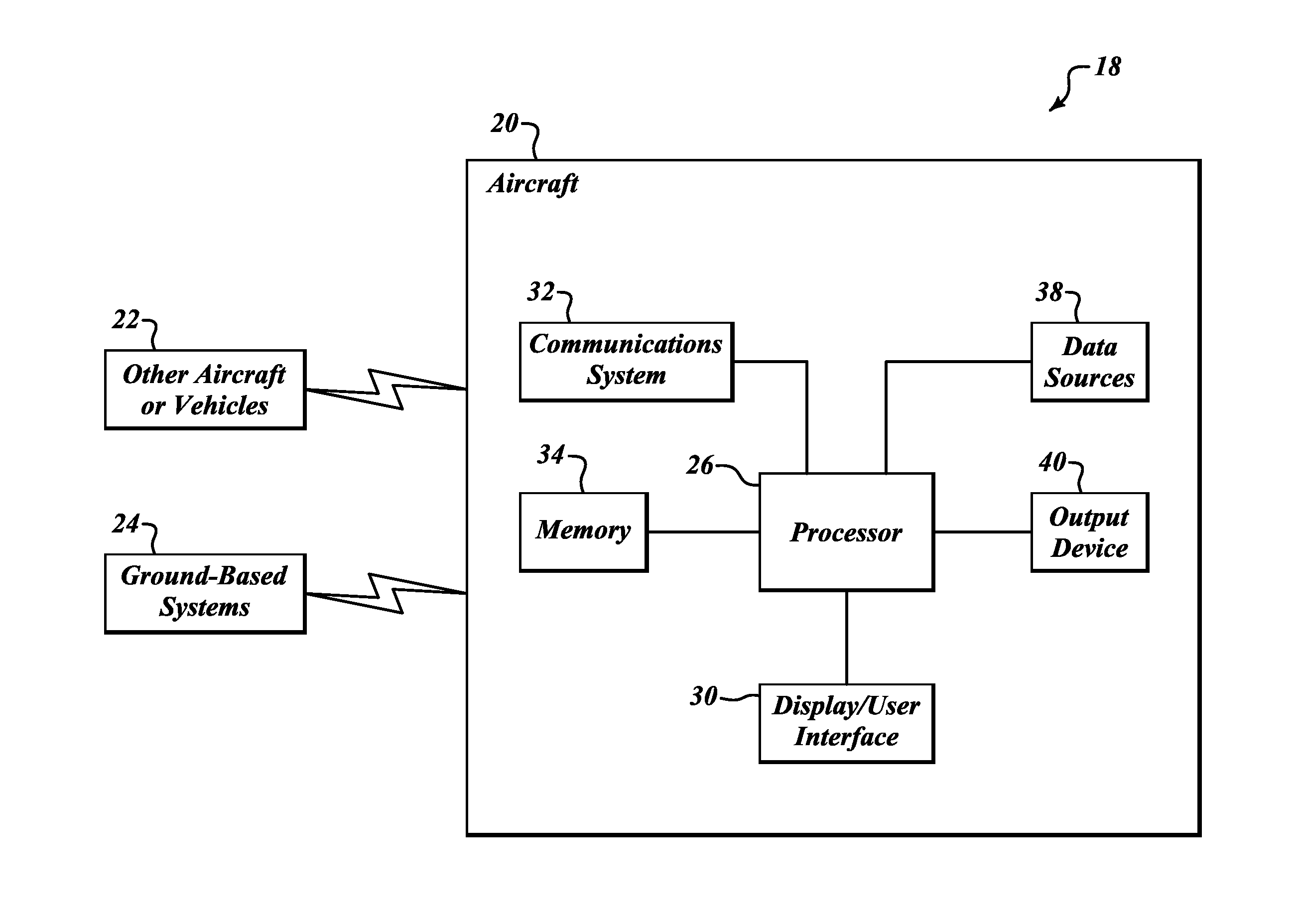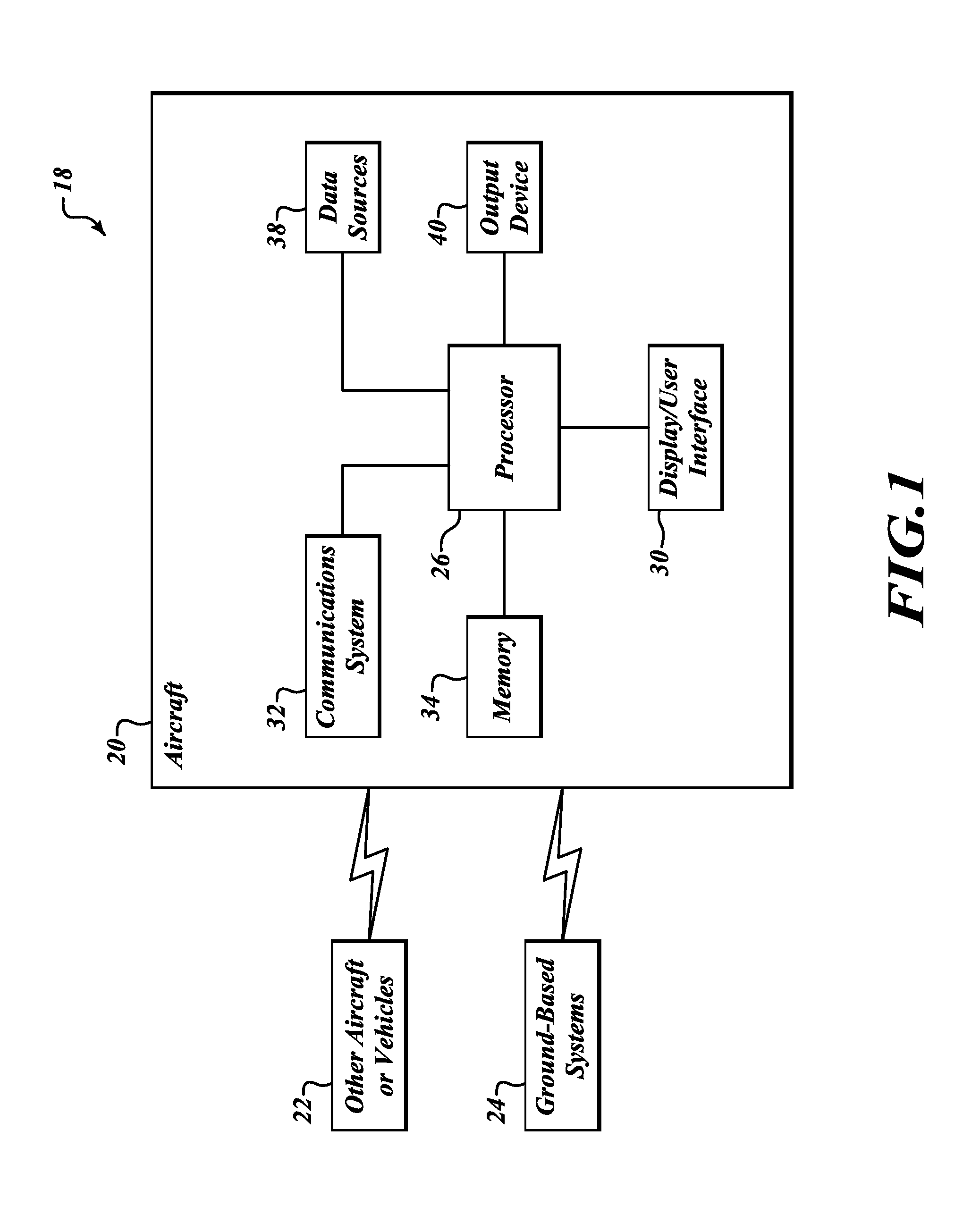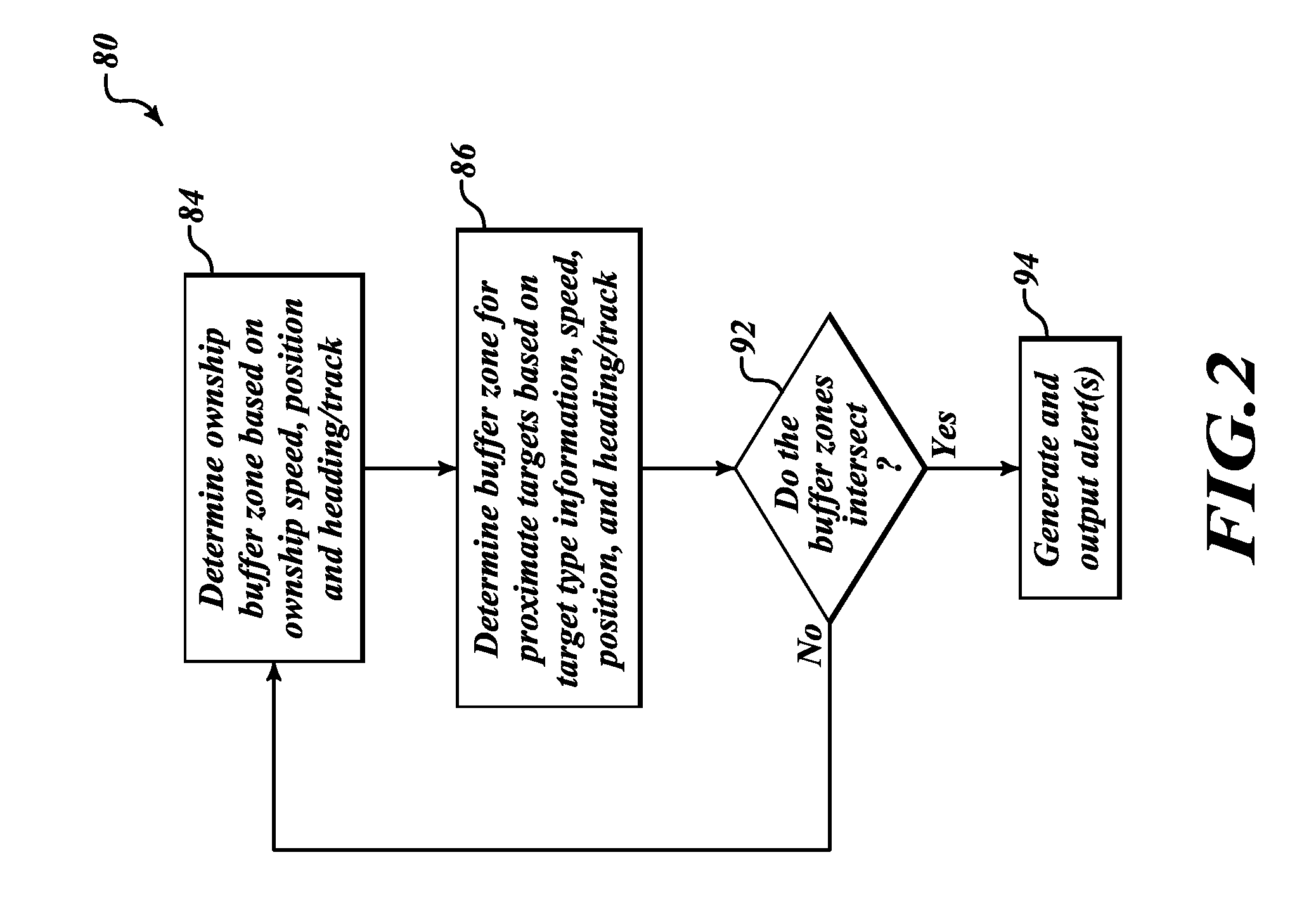Airport taxiway collision alerting system
a taxiway and collision alerting technology, applied in the direction of aircraft traffic control, navigation instruments, instruments, etc., can solve the problems of high rate of unwanted alerts, low visibility, and low safety of ground operations at night, and achieve the effect of reducing the risk of collision alerts
- Summary
- Abstract
- Description
- Claims
- Application Information
AI Technical Summary
Benefits of technology
Problems solved by technology
Method used
Image
Examples
Embodiment Construction
[0013]FIG. 1 shows an exemplary vehicle collision alerting system 18 located on an aircraft or ground vehicle (own-ship 20) for providing warning and / or caution alerts if ground based trajectories of the own-ship 20 and any of the other vehicles 22 might lead to a collision. The system 18 includes a processor 26, one or more data sources 38 (e.g., global positioning system (GPS)), a display / user interface device 30, a communications system 32, memory 34, and one or more output devices 40.
[0014]The processor 26 sends and receives state information over a data channel via the communications system 32 (i.e., transponder). Using own-ship information (from the GPS or other system) and target (other) vehicle state (e.g., position, velocity, acceleration, track-angle and / or heading from the other vehicles 22 or a ground-based system 24) and vehicle type information, the processor 26 calculates two-dimensional buffer zones (boxes) that surround each of the own-ship 20 and the target vehicle...
PUM
 Login to View More
Login to View More Abstract
Description
Claims
Application Information
 Login to View More
Login to View More - R&D
- Intellectual Property
- Life Sciences
- Materials
- Tech Scout
- Unparalleled Data Quality
- Higher Quality Content
- 60% Fewer Hallucinations
Browse by: Latest US Patents, China's latest patents, Technical Efficacy Thesaurus, Application Domain, Technology Topic, Popular Technical Reports.
© 2025 PatSnap. All rights reserved.Legal|Privacy policy|Modern Slavery Act Transparency Statement|Sitemap|About US| Contact US: help@patsnap.com



